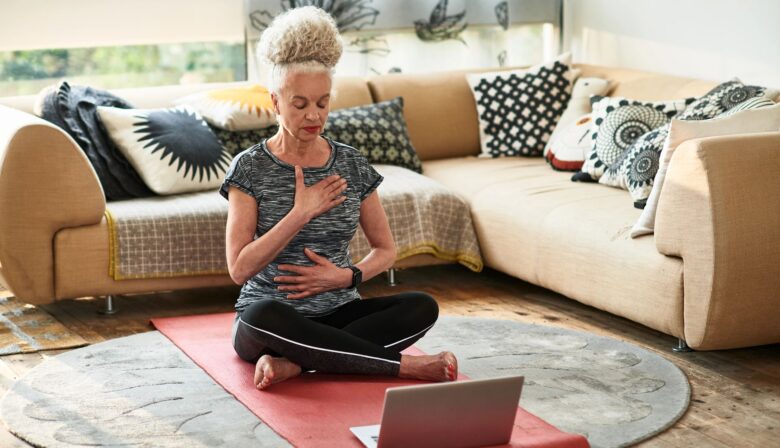Digital minimalism offers a refreshing alternative to the constant attention our screens give us. Imagine starting your day without notifications and scrolling. Instead of checking your phone while you eat, imagine yourself having an important conversation. Reclaiming your time, focus, and joy through digital minimalism is about more than just cutting back.
As technology proliferates, people can become overwhelmed. Social media updates and streaming content can keep us in a vicious cycle that hinders personal growth and connection. This instability presents an opportunity to simplify our digital lives. In this blog, we’ll discuss how embracing less can help us live better. We can nurture our relationships with ourselves and others and improve our mental clarity and well-being. Are you ready to begin this journey? Let’s learn how to use less technology consciously to live life to the fullest!
The Negative Effects of Overusing Technology
Technology is a part of our daily lives, but misusing it can have serious consequences. Constant notifications and digital distractions distract us from our focus. Tasks take longer, and productivity decreases. This can also have an impact on mental health. Screen time can increase anxiety and despair. Social media comparisons can make people feel inadequate or lonely.
Your physical health will also suffer. Prolonged use of devices can lead to obesity and poor posture. Staring at a screen for long periods of time can cause eye strain. Additionally, nighttime screen staring can lower the quality of your sleep. Blue light can disrupt our sleep cycle and make us feel worn out during the day. Technology is so ubiquitous that these negative effects can easily go unnoticed until they become overwhelming.
The Benefits of Digital Minimalism
A digitally minimalist lifestyle brings clarity and focus. Reduce distractions and make time for what matters. This focused strategy strengthens bonds with family and friends. Reducing screen time can improve your mental health. A simplified digital world can reduce anxiety because notifications fade into the background. Finally, we listen to your ideas.
Minimalism inspires creativity. With fewer apps vying for your attention, you can find inspiration more easily. By not having electronics around, you can pursue your hobbies and encourage your natural exploration. One of the biggest benefits is saving time. Less time spent scrolling means more time for personal development or leisure activities. This perspective changes the way you use technology and improves your life.
Everyday Digital Minimalism: How to Apply
To get started with digital minimalism, evaluate your technology habits. Find out which devices and apps you use the most. list: Awareness is key. Then prioritize tools for work or personal growth. Remove unnecessary apps from your phone or computer to avoid distractions. Turn off all notifications except the necessary ones.
Don’t let email and social media disrupt your day; set regular times. Create tech-free zones at home to encourage offline activities. Read, paint, or garden instead of sitting in front of a screen. Enjoy the silence while you’re on the go or cooking, without relying on technology to think. Be tech-savvy. Use every click to get great online content instead of scrolling through feeds.
Practical Ways to Reduce Screen Time and Digital Clutter
Start by limiting your screen time. Spending tracking apps can help you manage your time online. Create tech-free zones in your home. The dining room or bedroom is great for face-to-face conversations, even when you’re not in front of a screen.
Regularly clear digital clutter. Delete programs you don’t like. Folders make it easier to find important files. Turn off unnecessary notifications. This reduces distractions and allows you to focus on the task at hand instead of the alarm. Try reading or walking instead of scrolling. Offline hobbies can reduce your use of electronic products.
Finding a Balance: Using Technology Mindfully
Consciousness is the key to tech balance. Please consider reflecting on the reasons for your frequent device usage. Boredom, habit, or need? Manage your engagement by setting purposeful goals. Don’t let email and social media disrupt your day; set specific times. To encourage real conversations and relaxing moments away from screens, keep your dining room or bedroom tech-free.
Integrate a digital detox into your daily life. Even short breaks can improve focus and clarity. Use technology wisely and prioritize quality over quantity. Choose apps that enhance your life. Focus on relationships and personal development, but limit distractions. Such an approach will improve your relationship with your current technology.
The Long-Term Effects of Digital Minimalism on Mental Health
Becoming a digital minimalist can improve your mental health. Reducing screen time can reduce anxiety and tension. A calmer digital life can improve concentration. Fewer distractions allow you to focus better and be more productive. More engagement in a task leads to a sense of accomplishment and self-worth. When technology is pushed aside, real friendships become easier. Unlike screens, face-to-face contact can emotionally strengthen relationships.
Over time, practicing digital simplification can promote mindfulness. People pay more attention to their surroundings and experiences, increasing their sense of well-being. Creative thinking flourishes when there are fewer notifications and less online noise. People are not motivated by an endless stream of pre-prepared information but by their surroundings. This calm state of mind allows people to refocus on their interests and passions, which digital demands have lost, thereby fostering personal growth.
Conclusion
Digital minimalism is a lifestyle change, not a trend. It encourages you to prioritize what is important. As technology advances, intentionality becomes more important. Our digital decisions can have a huge impact on our mental health and well-being.
The quality of technology, more than the quantity, deepens our relationships with ourselves and others. Despite the volume of notifications, this route still improves focus and clarity. Any reduction in screen time leads to better technology use. You can change your environment to improve your well-being. As you travel, remember that simplicity often leads to contentment. Embrace the down moments and enjoy a deeper daily experience.
FAQs
1. Digital Minimalism—What is it?
Digital minimalism is the intentional use of technology to align with your beliefs and to eliminate distractions and clutter.
2. How do I become a digital minimalist?
Think about how much time you spend online and what hobbies enrich your life. Over time, consider removing apps and platforms that are not adding value.
3. Can I go completely offline?
While not everyone has the opportunity to limit screen time due to work or social obligations, it can still be helpful .
4. Can kids be digital minimalists?
Absolutely! Playing outside, reading, and being creative help kids develop beneficial technology habits.
5. Will I miss important information if I spend less screen time?
Quality over quantity ensures you stay informed without being overwhelmed by notifications and updates, even when you feel disconnected.




